2021 Ford F-150 Platinum PowerBoost

| The Good: – Very quick for a truck – Cabin space and features – Extremely comfortable ride |
The Bad: – Bed cover should be standard – Good handling only in sport mode – Parallel-parking is huge hassle |
This is a big one, literally and figuratively speaking. The Ford F-150 is among the top-selling vehicles in the entire world (apparently at Number 4, only behind the Toyota Corolla, Toyota RAV4 and Honda CR-V according to one list), and has handily beaten its American-built truck rivals on its home turf (as per the American way of counting sales). But with the latest Ram 1500, Chevy Silverado and GMC Sierra making a lot of noise as all-new models, we were keen to see if Ford’s new-for-2021 F-150 could still rule the roost after turning the segment upside-down in 2014 with their aluminium/turbo heresy.
Ford seems to be playing it safe with their designs lately, even when the car is significantly new. Apparently the standard 2021 Ford F-150 is 92 percent new or revised, including every exterior panel. What you don’t see are the massive changes under the skin, including a new hybrid-electric setup that is mated to the 3.5-litre turbo V6 in our aluminium-bodied F-150 Platinum FX4 test truck that has a “PowerBoost” badge on the tailgate. Still, if you actually walk up to one, you do notice the intricate detailing work that’s gone into the grille-and-headlights area, none of which is obvious in photos. At night, it looks far more modern thanks to redone LED lighting all round.
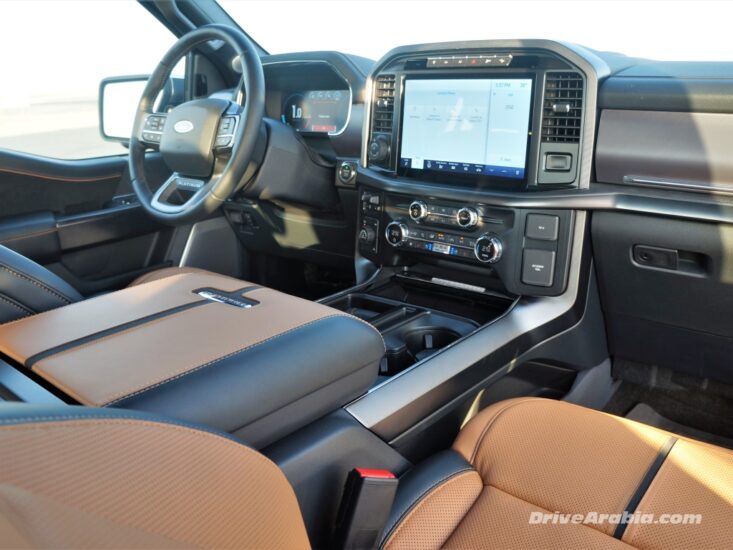
The interior has been been revamped, although the truck-ish blockiness has been retained. There is better use of materials than before, with padded areas on the upper window sills, stitched leatherette on the dash and even alcantara inserts on the doors to complement the leather seats. Huge chunks of hard plastics make up the lower areas, which is standard in this class.
There’s no point discussing the cabin space — it’s massive for five passengers — but the storage solutions need to be appreciated. The huge cup-holders can fit even smaller cans; there is a covered cubby with a wireless charger that fits large phones; there is a stand to hold your phone upright; the cavernous central cubby has a removable shelf; the ventilated front seats can recline almost flat; the rear seats have storage space underneath; the rear seat-bottoms flip up to create an indoor storage area; there are two glove-boxes; the gear shifter has an option to power-fold down and a table-top flips out to create a work space for your laptop; the truck bed (with factory bedliner in our test car) has tons of lighting as well as an inverter with two 230V plug-points to literally run anything with an electric cord back there, with the engine automatically starting up as needed to power your appliances; the fully-electric tailgate can be opened or closed with the key-fob and has a pop-out step ladder with handle to climb on easily; the open tailgate’s surface even incorporates imperial and metric ruler markings, and on and on the feature list goes. None of Ford’s rivals put this much thought into such supplementary ideas, although as city dwellers, our only pet peeve remains the lack of a foldaway bed cover to lock away large items.
On the comfort tech front, the screens are larger in all F-150s, with our Platinum test car getting a 12-inch touchscreen, thankfully still supported by hard buttons for audio and climate controls. B&O Play audio is available, offering up to 18 speakers. Sync 4 is standard, as are wireless Apple CarPlay and Android Auto. A built-in 4G modem comes standard and permits over-the-air upgrades of most onboard systems. A 360-degree camera system with parking sensors, panoramic glass roof, power-folding mirrors, smart key with remote start, strong front/rear climate control a/c, power-folding side steps and more were standard in our Platinum.
Safety isn’t skimped on either, with the usual roster of passive-safety features, airbags et al as well as the availability of active-safety tech such as adaptive cruise control, lane-departure warning, lane-holding steering on the highway, auto emergency braking with pedestrian detection and more.
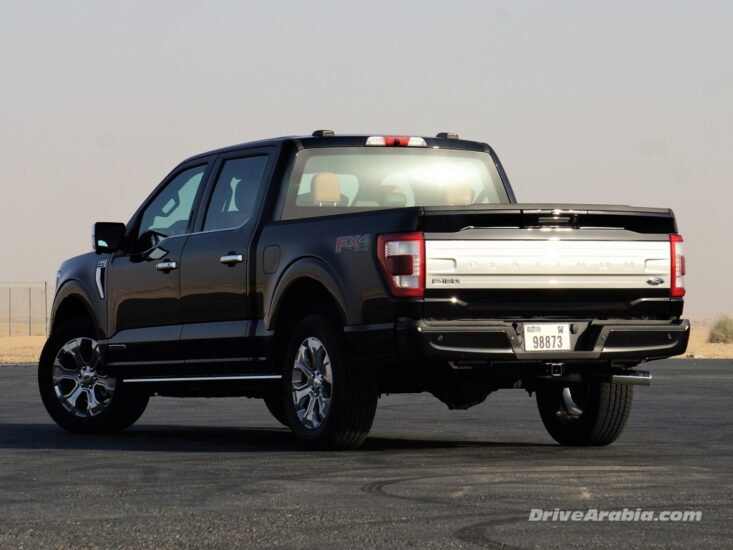
Aside from the carryover V8 and turbo V6 engines, what we’re driving is the new PowerBoost hybrid offering that mates the Explorer Hybrid’s transmission-mounted electric motor and frame-mounted 1.5-kWh battery pack with the existing 3.5-litre EcoBoost V6. With a power figure of 430 hp at 6000 rpm — including the 47 hp from the batteries stowed in the floor — as well as 773 Nm of torque at 3000 rpm, the F-150 PowerBoost is the fastest petrol-powered non-Raptor F-150 you can buy today.
With claims of more than 5400 kg in towing capability, better fuel economy and 1100 km driving range, the benefits of the hybrid model are obvious. We got a 0-100 kph time of 6.6 seconds, although it feels much quicker as there is a deluge of torque low in the rev range. And we recorded fuel consumption at about 15.5 litres/100 km (6.5 km/litre), although this is with a lot of highway driving where the benefits of a hybrid are lessened. The petrol engine shuts off for extended periods when crawling around the city, and while still keeping the a/c running.
Other mechanical changes include better engine and transmission mounts, new rear leaf springs and shocks, retuned adaptive power steering system, new active front air dam that retracts at low speeds and a host of external aerodynamic tweaks, all aimed at making the F-150 more refined.
All this results in a mind-blowingly comfortable ride when paired with the adaptive suspension in our Platinum version, especially impressive considering the rear still rides on leaf springs. The suspension feels like riding on a magic carpet — a term generally used to hype up a Rolls-Royce’s ride. It’s very quiet up to about 100 kph, but then the road and wind noise start increasing, topping out at moderate levels.
We initially found the handling to be very lumpy, jiggling around tight corners like an old-school truck, which we put down to the FX4 off-road package that our tester came with. However, after switching the “drive mode” from “Normal” to “Sport” (out of a possible 6 modes), the adaptive suspension tightened up and it drove like a modern SUV, with far better steering response and body control. We’d have loved to drive in “Sport” mode all day, but that also means the petrol engine is used more, reducing fuel economy.
Of course, if fuel burn is a concern, there is an “Eco” mode that we tried for about 2 seconds; and there is the “Deep Snow/Sand” mode (odd pairing, considering snow and sand driving are rather different) that seems to work well, loosening up the ESP and locking the rear diff lock, and we had minimal struggle driving on soft sand (without deflating tyres) where other proper 4x4s were getting stuck. The F-150 FX4 is well-equipped for offroading, with the low-range gearing complemented by hill-descent control, extra skid plates offroad-friendly shocks and more ground clearance than a Toyota Land Cruiser, but the wheelbase is going to be a limiting factor when it comes to full-blown dune-bashing.
The redesigned F-150 back in 2014 changed the game completely when Ford introduced the all-aluminium body and V8-beating turbo engines to the segment, to the point where even the latest crop of redesigned rivals are still technologically behind. The 2021 F-150 simply doubles down on their leadership, with features that go far beyond what the others could come up with. The F-150 is pricey if you load it up with options, but it remains the king of “1500” trucks.
| Price Range: Dh 284,500 – 288,000 Current Model Introduced in: Body Styles: Engines: Transmissions: Setup: Suspension: |
Brakes: Front: discs Rear: discs Curb Weight: Length: Wheelbase: Top Speed: Test Acceleration 0-100 kph: Observed Test Fuel Economy: |

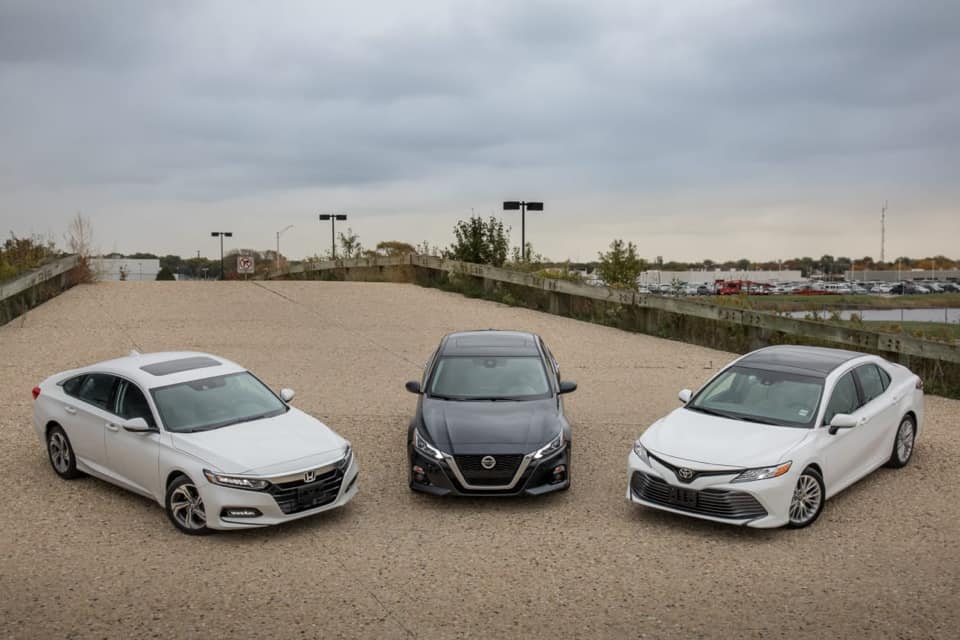
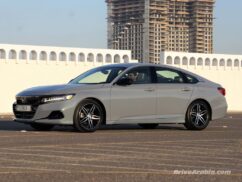
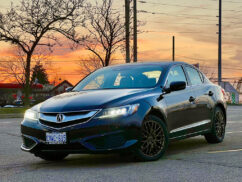

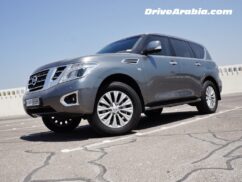
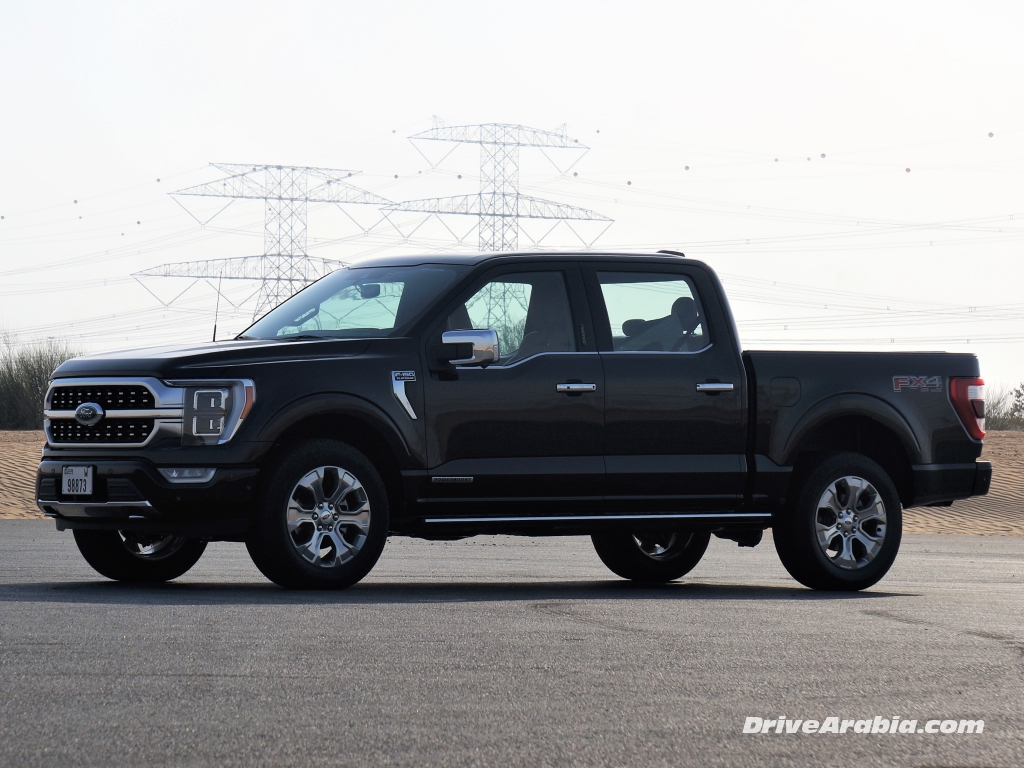
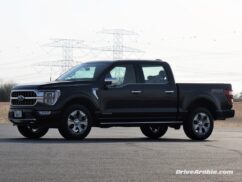
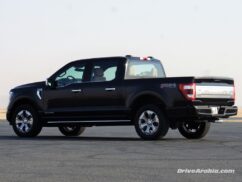
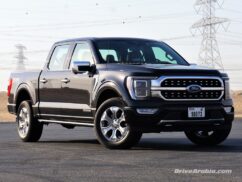
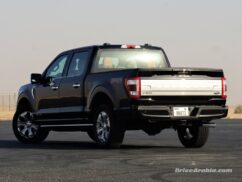
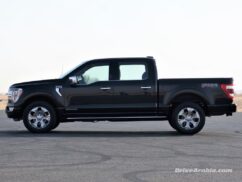
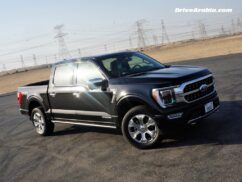
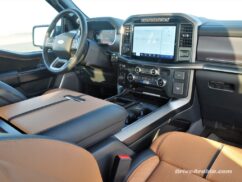
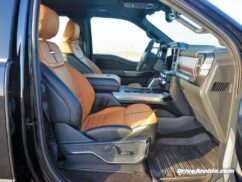
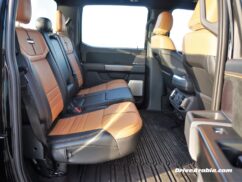
There are no comments. Be the first!